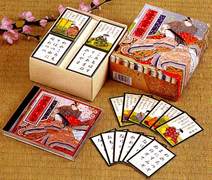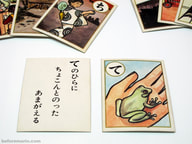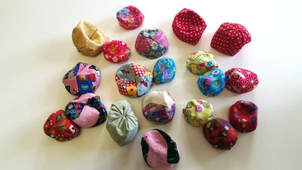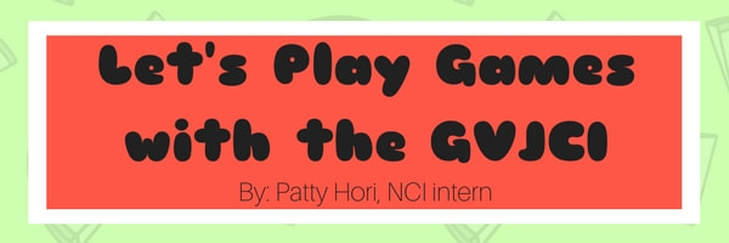Karuta
Karuta is a traditional Japanese card game introduced by Portuguese traders in the 16th-century. There are two types of Karuta: Uta-Garuta and Iroha Karuta.


Through the port of Nagasaki in the mid-1500s, Portuguese sailors introduced European playing cards to the Japanese Samurai Class. These cards were called carta, which through the ears of the Japanese, turned into karuta. Finally, during the Edo Period (1600-1868), Karuta became a distinctly recognizable Japanese custom. At first, painting these cards was a painstaking process, but eventually, they became easy to mass produce because of the invention of wood block printing, making karuta cards affordable to the average family.
Here's how to play:
First of all, you need to get your hands on a Karuta Deck; this can mean borrowing them from a friend or going out to buy them. You need one caller and at least two players (the more players, the more competitive). In Karuta, there are two types of cards:
Yomifuda: "reading cards" that have written information on them
Torifuda: "grabbing cards" that have pictures and/or a written language on them
**each yomifuda has a corresponding torifuda**
Alright, now you're ready to play and this is how it goes:
- Spread all the torifuda cards in front of the Players, face up.
- The Reader then pulls out a card from the yomifuda deck and reads it out loud.
- The Players race one another to find the corresponding torifuda card based upon the yomifuda clue; when the player finds it, they grab it.
- Repeat steps 2 & 3 until there are no cards remaining.
- When there are no cards left, the person with the most cards wins!
If you need a visual, here is a great Youtube video of school children playing Karuta and absolutely killing it!!! Have a fun time with this game you can play with family and friends!
Otedama

How to play Basic Otedama:
- Scatter the five ojami on the ground.
- Grab and throw one ojami straight up in the air and with the same hand, grab another ojami and transfer it to the other hand.
- Keep repeating this process until four ojami are in your opposite throwing hand.
If this is too easy for you, try grabbing two ojami at a time. After you've mastered this, you can also check out this link for more difficult variations of Otedama.
Ohajiki
| Ohajiki is played with flattened coin-shaped pieces, and closely resembles the American Game Marbles. These small playing pieces are called ohajiki and the players take turns flicking them at other pieces. Ohajiki come in many forms; they can look very plain, or they can even have cute characters and intricate patterns on them. In the old days, children would play with flat stones or pebbles, but today, they play with flattened glass pieces. When playing, make a circle with your thumb and index finger (or middle finger), then flick one ohajiki with your thumb. | |
- All the players lay down their ohajiki pieces on a flat surface and play janken (rock, paper, scissors) to decide the order.
- The first person of the order picks up all the pieces and throws them down to scatter the pieces.
- The player (whose ever turn it is) draws an imaginary line between two pieces to indicate which pieces he or she is going to hit.
- If the player hits the indicated piece and no other surrounding ones, then they get to continue their turn. Otherwise, the next person goes.
- At the end of the game, the person with the most ohajiki wins!!!
Hana Ichi Monme
- The group of kids split themselves into two groups and line up parallel to one another with each person holding their teammate's hand.
- The Leader from each group steps up and plays janken (rock, paper, scissors). The winning team sings (1) while stepping forward, and the losing team sings (2) while stepping back. When "monme" is said, the team kicks the air as if kicking dirt.
| Lyrics: (1) Katte ureshii hana ichi monme (2) Makete kuyashii hana ichi monme (1) Ano ko ga hoshii (2) Ano ko ja wakaran (1) Sodan shiyo (2) So shiyo | Translation: (1) We're so happy we won, hana ichi monme (2) We're so upset we lost, hana ichi monme (1) We want that kid (2) We don't understand which kid you mean (1) Let's talk about it (2) Yes, let's |
| Lyrics: (1) Yoshi-chan (the name of player) ga hoshii (2) Keiko-chan (the name of player) ga hoshii | Translation: (1) We want (insert name) (2) We want (insert name) |
5. The games ends when one team loses all of their members.


 RSS Feed
RSS Feed
